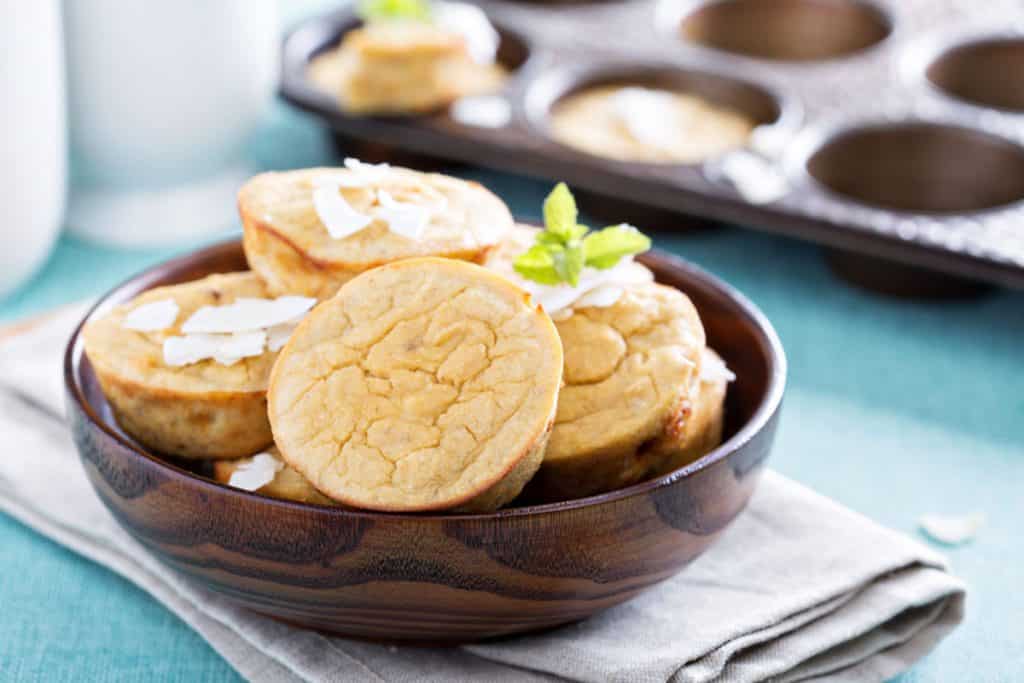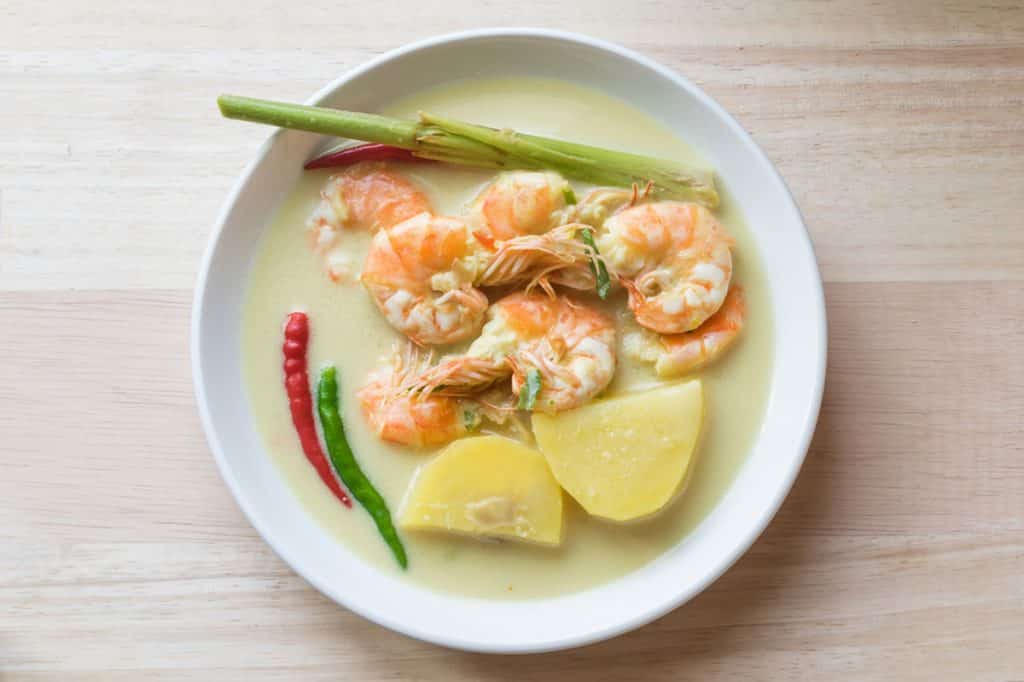Have you ever felt frustrated or disheartened after checking out gluten-free cookbooks? I know I have – way too many recipes call for an odd mix of starches, various flours, thickeners, and gums. And a staggering number of gluten-free recipes contain hefty amounts of nut flours that can be pro-inflammatory. That’s why I almost always use coconut flour when I bake. The only issue with coconut flour is that it can be quite tricky to use. So before you start using this flour with impressive health benefits, check out this article. Bonus: You’ll also find a list of mouth-watering recipes at the end of the article.

What is coconut flour
Highly prized in the Paleo community, coconut flour is not your traditional ‘flour’. It contains absolutely no grains and no nuts. Although the name may be confusing, the coconut is not a true nut but a one-seeded drupe. And pure coconut flour is simply coconut meat that has been dried and ground into a powder or flour.
Coconut flour is typically manufactured using one of the following methods:
- Dry process. In this method, the coconut meat is first ground and dried before most of the oil (about 88%) is extracted.
- Wet process. Manufacturers who use this method will first extract the coconut milk from the meat before drying and grinding it into coconut flour. About 52% of the oil will be extracted from the coconut meat in the wet process method.
Nutrition info for coconut flour
According to the USDA Food Composition Databases, 1 ounce (about 28g or a 1/4 cup serving) of coconut flour contains approximately:
- 120 calories
- 4 grams of protein
- 4 grams of fat
- 16 grams of carbohydrates
- 10 grams of fiber
- 2 grams of sugar
Coconut flour vs. other gluten-free flours
Let’s see how coconut flour compares to other popular gluten-flours.
Per 1/4 cup serving size:
- Almond flour contains 160 calories, 6 grams of protein, 14 grams of fat, 5 grams of carbohydrates and 3 grams of fiber.
- Amaranth flour contains 110 calories, 4 grams of protein, 2 grams of fat, 20 grams of carbohydrates and 3 grams of fiber.
- Buckwheat flour contains 94 calories, 3.5 grams of protein, 1 gram of fat, 20 grams of carbohydrates and 3 grams of fiber.
- Chickpea flour contains 110 calories, 6 grams of protein, 2 grams of fat, 18 grams of carbohydrates and 5 grams of fiber.
- Hazelnut flour contains 180 calories, 4 grams of protein, 17 grams of fat, 5 grams of carbohydrates and 3 grams of fiber.
- Rice flour contains 145 calories, 2.2 grams of protein, 0.6 grams of fat, 32 grams of carbohydrates and 1 gram of fiber.

Coconut flour: the exotic flour with impressive health benefits
1. Gluten-free
One of the most appealing characteristics of coconut flour is that it does not contain gluten, a protein found in wheat, rye, barley, and triticale.
You’re probably thinking ‘not much of a health benefit since only individuals with celiac disease or gluten intolerance should go on a gluten-free diet’.
Well, not exactly. You see, research has linked gluten with a shockingly broad spectrum of symptoms and conditions including:
- Ataxia
- Attention deficit hyperactivity disorder
- Autoimmune conditions like fibromyalgia, type 1 diabetes, multiple sclerosis and endometriosis
- Autism spectrum disorders
- Depression
- Inflammation – this can increase the risks of obesity, heart disease, and diabetes
- Schizophrenia
- Skin conditions such as dermatitis
So, even if you don’t have celiac disease and aren’t gluten intolerant, you might want to try a gluten-free diet for a month to see how you feel without gluten. Since many gluten-free products are nothing but processed foods, make sure to eat REAL FOODS. You may find the list of recipes at the end of this article pretty useful.

2. Unlikely to cause allergies
Allergies to peanuts and tree nuts such as almonds, Brazil nuts, walnuts and cashew nuts are relatively common. And because of the ‘nut’ in coconut, many people mistakenly believe that they’ll also be allergic to coconuts if they are allergic to peanuts and tree nuts. However, as mentioned earlier, the coconut is not a true nut. As such, coconut flour should be safely consumed by most individuals, even those with a diagnosed tree nut allergy.
This being said, although extremely rare, some cases of coconut allergies have been reported. So, if you suspect an allergy to the coconut, don’t try any recipe containing coconut flour before talking to your physician.
3. Can improve your metabolism
When most people think of their metabolism, they think of their body weight. Or how many calories they can eat without increasing the number on the bathroom scale. Well, metabolism is so much more than that. In a nutshell, the metabolism refers to the essential biochemical reactions (such as digestion and production of hormones) that regulate how our cells use and store energy.

In a way, you could picture the metabolism as an ongoing ‘discussion’ between your brain and the cells throughout your body. So, when your metabolism is working optimally:
- You’ll find it easier to maintain a healthy weight because your body is efficiently using energy
- Your hormones will be more effective – this includes leptin and ghrelin, the hormones that help control your appetite
- Your immune system will be stronger
- New cells will be generated at an increased rate to replace old ones (hello beautiful skin!)
- You’d be at lower risk for chronic diseases such as heart disease
Health benefits of the MCFAs in coconut
- Compared to long chain fatty acids, MCFAs are way less likely to be stored in the body’s fat deposits
- MCFAs enhance the body’s ability to burn fat as energy (improved metabolism)
- Studies suggest that MCFAs can help regulate appetite
- MCFAs have been found to possess anti-coagulating effects which could reduce the risks of atherosclerosis (the hardening and narrowing of the arteries)
4. May enhance blood sugar control
Although coconut flour is high in carbohydrates, it can improve your blood sugar levels since:
- Most of these carbohydrates come from the flour’s high fiber content – coconut flour is 60% fiber and can, therefore, slow down the absorption of sugar in the body
- MCFAs have been shown to improve insulin’s function, making it more sensitive
However, do keep in mind that coconut flour is not a magical food. Dumping loads of sugar, honey, maple syrup or fruits in your batter will cause your blood sugar levels to skyrocket.
5. Naturally rich in fiber
The fiber in coconut flour is 56% insoluble and 4% soluble. Research suggests that the high levels of fiber in this flour do not impede mineral absorption. When we eat foods that naturally contain soluble fiber (but not foods with added fiber), the beneficial bacteria in our digestive tract will feed on (and ferment) these fibers to produce short-chain fatty acids such as butyrate. These fatty acids have been found to:
- Tone down inflammation which, if left unchecked, can lead to a host of health complications like heart disease
- Improve insulin sensitivity and thus enhance blood sugar regulation
- Reduce the risks of neurodegenerative diseases like
- Ameliorate resistance to stress
- Improve the body’s immune response
Note: Coconut flour can prove to be an amazing addition to your diet provided you eat slowly and mindfully.
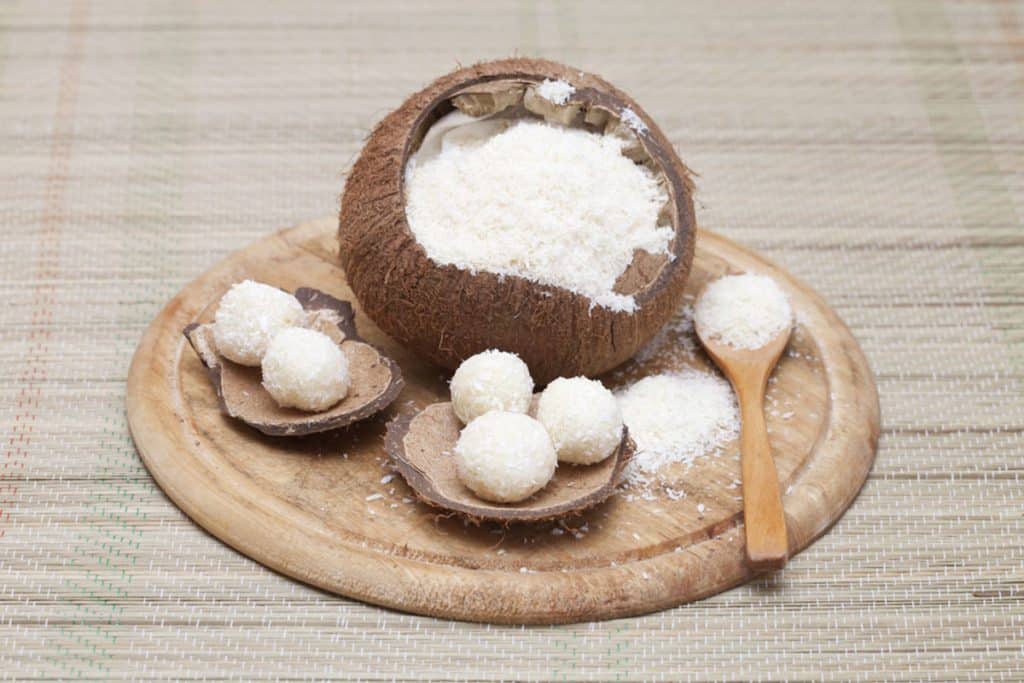
Choosing the best coconut flour
To reap the most health benefits from coconut flour, go for a high-quality product that is:
- 100% raw, almost beige in color and has a rich coconut scent – coconut flour that isn’t 100% raw will be deodorized and bleached and will, therefore, have a bright white color and barely any nutty smell.
- Organic
- Certified non-GMO
- Free from added sulfites or preservatives
Is coconut flour for you?
As unsatisfying as it may be, the answer is: it depends on your physiology. After all, there is no ‘one size fits all’ when it comes to nutrition. Although most people tolerate coconut flour well, there are some aspects you need to consider before deciding whether to experiment with this flour or not.

1. Eggs, eggs, and more eggs
Most recipes that list coconut flour as the only flour will almost always require eggs. And a lot of them since the eggs provide structure and act as binding agent in coconut flour baked goods. You could use chia or flax eggs as a substitute for eggs but, from experience, these egg replacers aren’t effective options in 100% coconut flour products. So, if you’re allergic to eggs or are on the autoimmune paleo diet, make sure that you can tolerate all the ingredients listed in any recipe calling for coconut flour.
2. Coconut flour tastes like coconut meat
If you really dislike the coconut’s taste, you might be reluctant to taste anything that contains coconut flour. However, the nutty flavor and coconut taste is very subtle so give it a try. In fact, the taste is so mild that coconut flour works great in both savory and sweet recipes. In my experience, you’ll barely taste the coconut flavor if you’re using it in recipes that call for cocoa, cheese or other ingredients with strong flours. But keep in mind that if you use coconut oil and coconut flour together, the oil will bring out the coconut flavor.
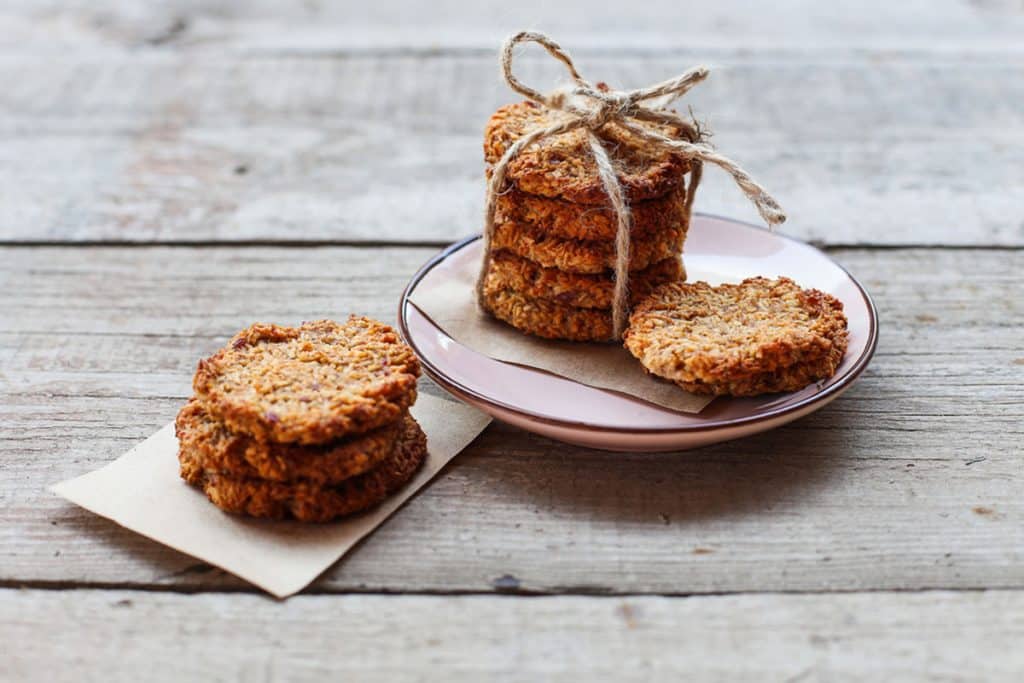
3. Coconut flour is suspected to be a high FODMAP product
Monash University hasn’t tested coconut flour yet but FODMAP Friendly, another FODMAP testing company; found that coconut flour was high for sorbitol at a three-tablespoon (20g) serve. Moreover, since sorbitol can bind to GLUT5 transporters (the proteins that act as ‘doors’ and allow fructose to be absorbed), it can increase the risks of fructose malabsorption especially if you are using fructose-containing ingredients in your baked product. So, if you are (or suspect you are) sensitive to either fructose or sorbitol, you may want to go easy on coconut flour.
4. Coconut flour may contain too much fiber for some people
Fiber, especially insoluble fiber, can exacerbate symptoms in individuals with an inflamed digestive tract (such as those with Crohn’s disease or ulcerative colitis). Since coconut flour is rich in insoluble fiber, it may not be a suitable option for people with these health conditions. You see, consuming lots of insoluble fiber when your gut is all inflamed would be akin to rubbing a sandpaper against an open wound… Now, this does not mean that you should need to forego coconut flour completely if you have any of these health issues. The trick is to listen to your body – you may find that you can easily tolerate up to 2 to 3 tablespoons of coconut flour per day.

What you need to know before using coconut flour
- Coconut flour is not equivalent to wheat flour or other grain-based flours – What this means is that you cannot substitute coconut flours for these flours at a 1:1 ratio when baking. A little coconut flour goes a long way so make sure to stick to the amounts listed in the recipe or, trust me; you’ll end with a product that’s extremely dry and hard to swallow. For instance, you’ll generally need to substitute 1/4 cup to 1/3 cup coconut flour for 1 cup grain-based flour.
- When baking with coconut flour, it is crucial to remember that this flour absorbs A LOT of liquid. This property will yield a product that is dense and soft so long as you don’t use too little liquid or too much coconut flour. Therefore, as a rule of thumb, you’ll want to use 6 eggs and a cup of liquid per cup of coconut flour.
- Coconut flour is dry – Besides using plenty of eggs to increase moisture, you can also add pureed, mashed or cooked fruits and vegetables to your coconut flour batter to reduce dryness.
- Coconut flour tends to clump – Make sure to add the flour slowly to your wet ingredients and beat thoroughly. This will help produce a fine-textured product.

- Coconut flour can be used for frying or sautéing – To do so, simply use coconut flour in an amount that is equivalent to wheat flour.
- Coconut flour is great for thickening soups, sauces, and gravies – Again, remember that this flour is VERY absorbent so you may want to add one teaspoon at a time (stirring constantly to avoid lumps) until you reach the desired texture.
How to make your own coconut flour
Most well-stocked health food stores and grocery stores will usually carry coconut flour. But this product tends to have a high price tag. So, if you’ve got an adventurous soul, you could try to make coconut flour at home using the guidelines in the video below.
If you don’t feel like switching on your oven just to dry some coconut, you could dry the coconut fiber (obtained after making coconut milk) in a large skillet over low to medium heat. I find that this gives a nice roasted taste to the flour. Or, if you live in a hot country, you could place the coconut fiber on a large metal tray, cover it with a very thin cloth and leave it a few hours under the sun.
Or you could just buy it in bulk here – it could be more cost and time effective.
How to store coconut flour
Although coconut flour is rich in fats, these fats are saturated which means that they will withstand heat and light much better than nut or seed flours. I live on a very humid (and hot!) tropical island and keep coconut flour in an airtight container or large mason jars without any issue.
But you can also keep your flour:
- In the refrigerator for about 6 months.
- In the freezer for at least 12 months.
For best results, bring the flour to room temperature before mixing in other ingredients.
This being said, if your coconut flour starts tasting bitter or smelling funny, it has probably gone bad.
Tip: If you find that you only use a few tablespoons of coconut flour per month, you might want to keep a week’s worth of coconut flour in an airtight container and the rest in the refrigerator or freezer. This should help extend the freshness of the coconut flour.
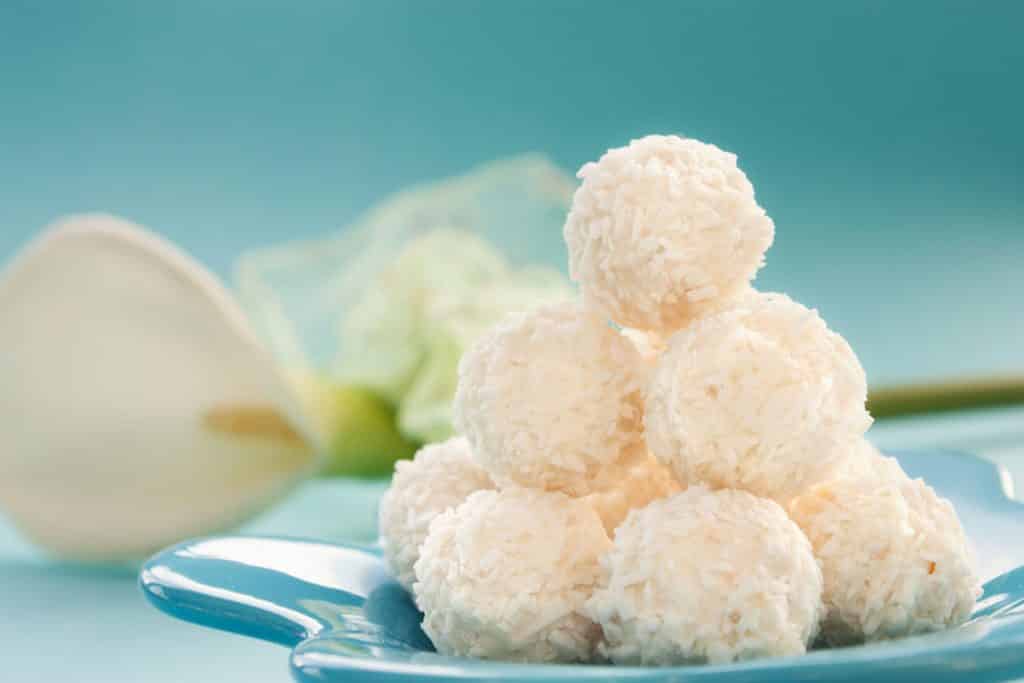
Explore the world of coconut flour with these 13 mouth-watering recipes
I personally love creating breads, muffins, and cakes with coconut flour – it isn’t that hard once you’ve tried a few established recipes first. To get you started, I’ve compiled a list of my favorite recipes (just click on the recipe’s name to check out the full recipe). Give them a try and share your experience on our Facebook page.
Note: Remember that coconut flour is very filling. Since you may not feel full while eating a product containing coconut flour, it is very easy to overeat. So keep indigestion at bay by taking the time to really savor each bite.
Breakfast ideas
If you’re like me and don’t have much of a sweet tooth (or you feel like having some gluten-free croque monsieur with butter and lots of cheese), simply omit the maple syrup. Another modification I did to this recipe was to add the egg yolk and whites separately. To do so, add the egg yolks to the batter before whipping the egg whites into soft peaks and folding these gently into the batter – this should make the bread less dense.
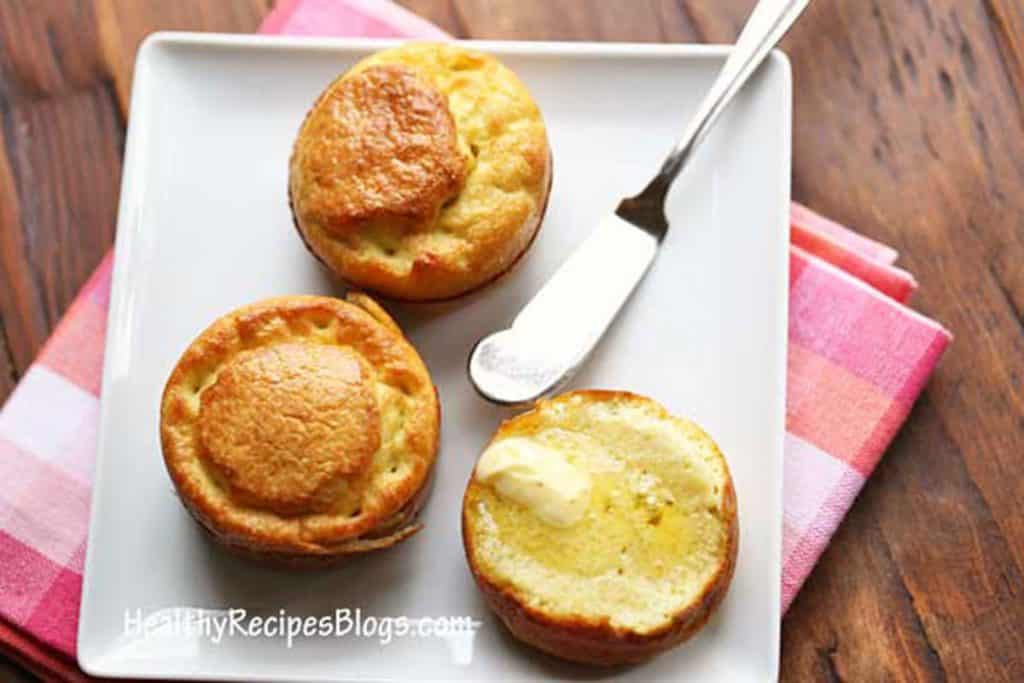 Photo:Healthy Recipes Blogs
Photo:Healthy Recipes Blogs
Although these popovers are soft all over (instead of crunchy outside and soft inside like wheat popovers), they are an absolute treat to have for breakfast. It does call for milk, however. So, if you don’t consume milk, just use regular coconut milk. For a different twist on these popovers, add some minced chicken and mixed herbs to the batter before popping the ramekins in the oven
I haven’t tried this recipe but I know how much people like donuts. So here’s a healthy version – the coffee is totally optional.
Lunch & dinner ideas
As the author suggests, avoid using non-stick pans or griddle for cooking since these emit toxic fumes when heated. If, for whatever reason you do need to use non-stick pans, just make sure not to preheat the pan on high heat and to use low heat throughout cooking.
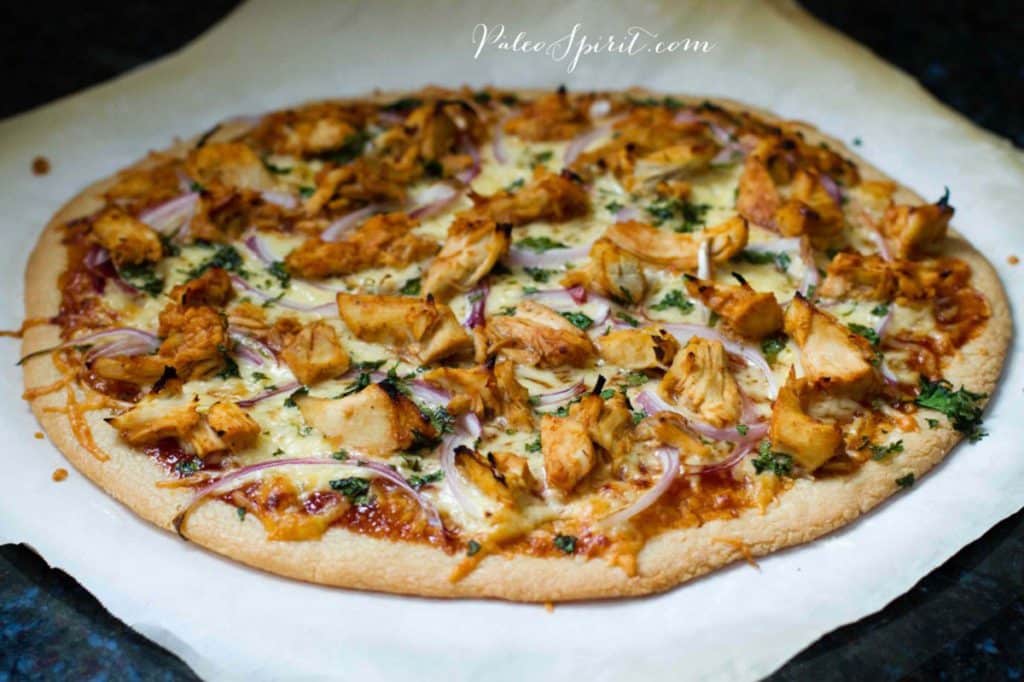 Photo: Paleo Spirit
Photo: Paleo Spirit
For a different twist on this recipe, add some mixed dried herbs and a dash of cayenne pepper to the flour before adding the other ingredients.
These meatballs pair amazingly well with the coconut flour tortillas above and some homemade guacamole.
Snack ideas
This recipe can easily be made into muffins and frozen for later.
As the name of this recipe suggests, these crackers are not dairy-free. You could omit the cheese and butter if you’re allergic to dairy products but since these ingredients a
Instead of adding the raisins in the batter, you could scoop the cookie on the cookie sheet and then add different fruits (such as chopped dates, apricots, cherries or blueberries) to individual cookies. This way you’ll have a variety of cookies in a single batch.
10. Double Chocolate Chip Cookies
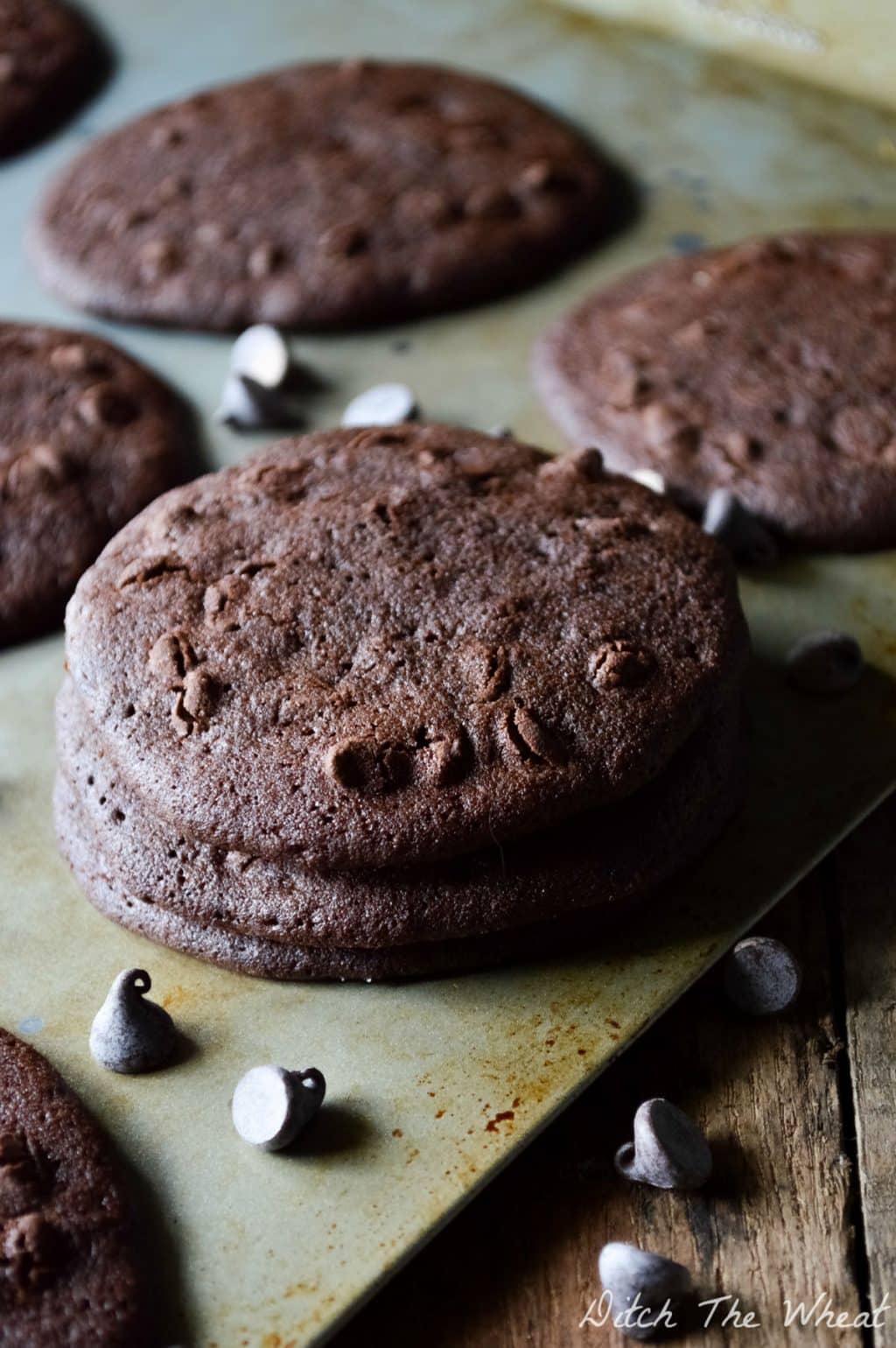 Photo: Ditch The Wheat
Photo: Ditch The Wheat
This recipe calls for quite a large amount of sugar and, as the author suggests, reducing the sugar would yield a very bitter cookie. To prevent blood sugar spikes, you might want to add some Ceylon cinnamon powder to the batter.
The thing I like the most about this particular recipe is that it uses chopped onion and garlic instead of powders. And of course, they taste amazing! Tip: make a big batch and let them cool completely at room temperature on a rack before placing them on a tray in the freezer. Once the biscuits are frozen, simply keep them in a zip-lock bag. To reheat, just use a skillet.
Muffin recipes
Baking powder often contains aluminum which can be a real problem for individuals with autoimmune conditions. So, sub the baking powder with 1/4 teaspoon of baking soda and 1½ teaspoon of vinegar or lemon juice.
Make sure to use full-fat coconut milk (preferably home-made or a BPA-free brand) to reap all the health benefits of its MCFAs. You can also omit the maple syrup to make the muffins less sweet.
Now, I’d like to hear from you. What do you think of coconut flour as a substitute for regular wheat flour? Do you have any tips to share.



